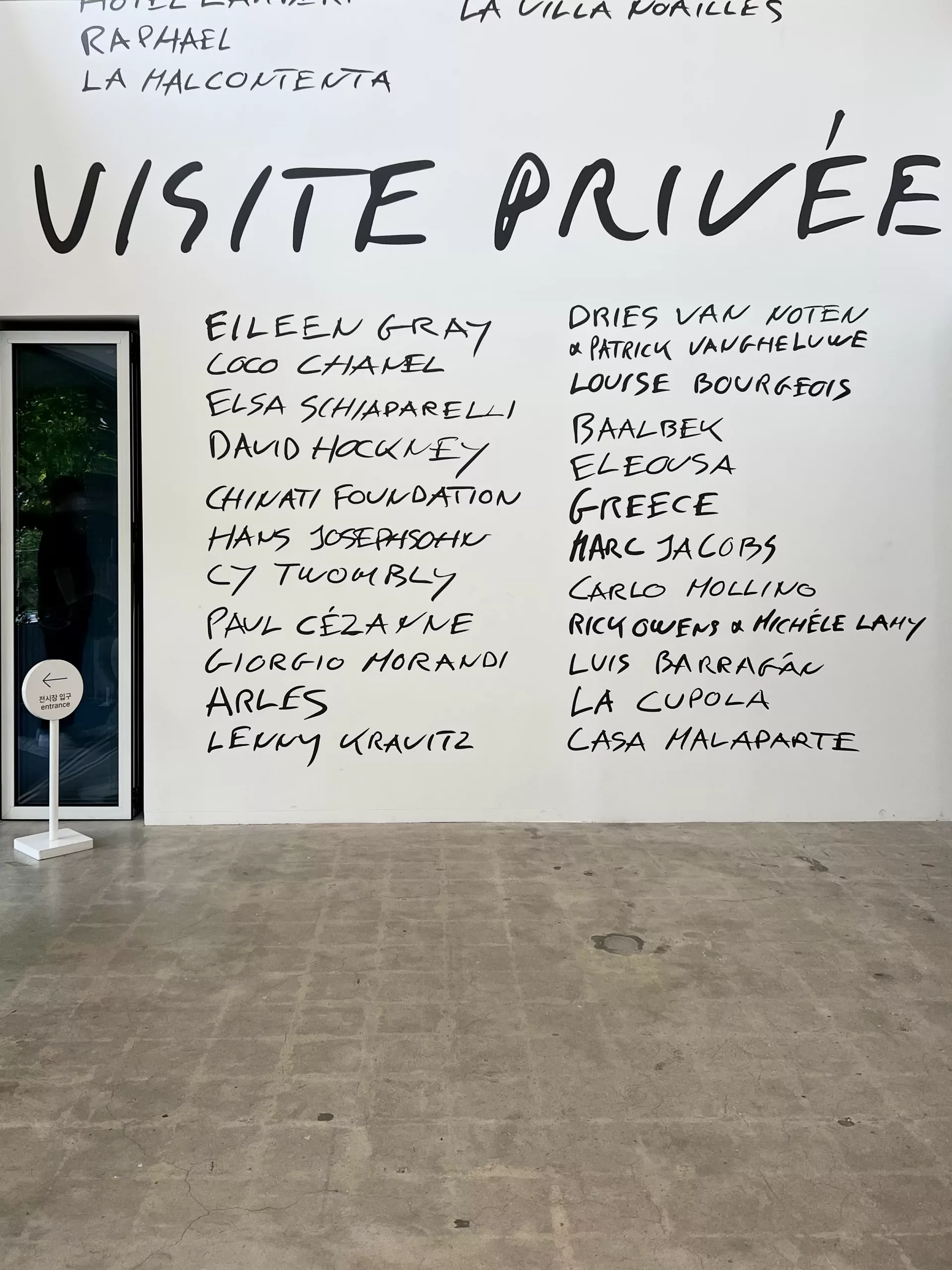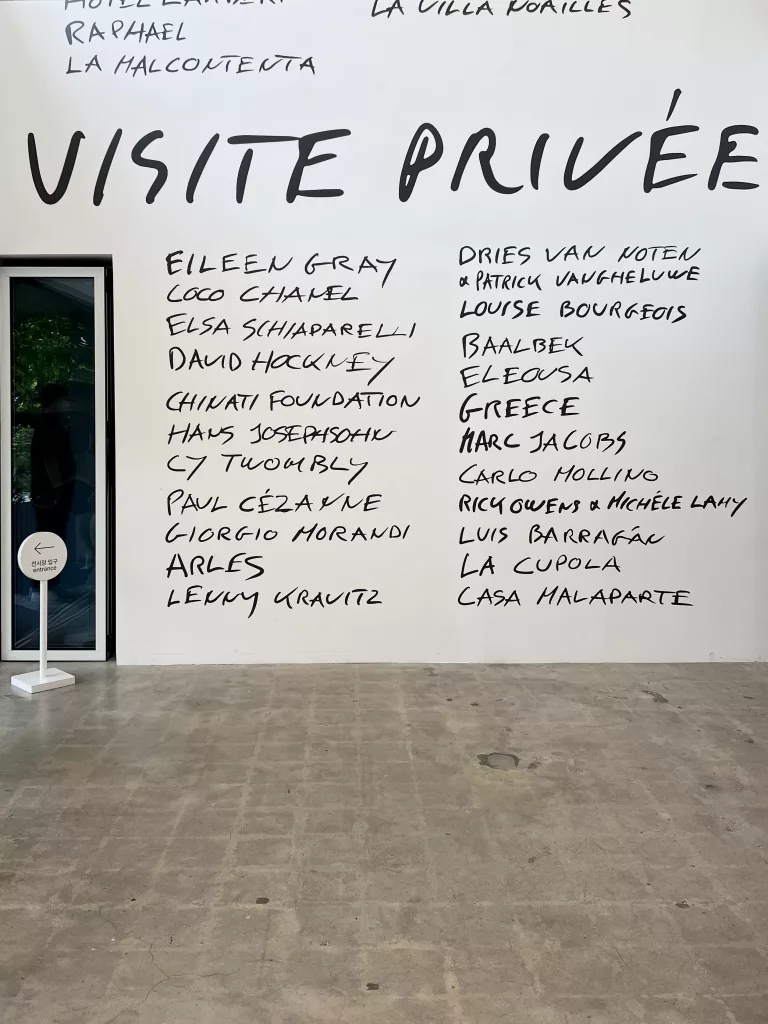
François Halard’s photography exhibition “Visite Privée” (private or secret visit) is on display at Piknic, Seoul Korea.
Visitors are required to install a silent camera app in order to take photos in the exhibition(As visitors to South Korea may already know, some countries, including South Korea, force your smartphone to make a shutter sound when you take a photo.), a point of operation that I thought was very desirable, even if the recommended app is not complete and the ads are a bit annoying.
I was actually more curious about Piknic than the exhibition, so I wanted to visit it from the beginning of the opening, but I was late. I know that it was originally renovated from the Hyorim Building in Jung-gu, but I assume that the previous building was just an office. I think it would be great if there was a history of the building before and after construction and summarized building information in one place, as I think it is very desirable to try to recycle buildings in places like Seongsu-dong and Euljiro, which are considered symbols of reckless development during the high growth period, in a modern way rather than building a completely new building.
The building’s location is attractive, but I was particularly impressed with the thoughtfulness of the exterior design, especially the space leading to the rooftop garden. The weather played a role, but the view from the terrace with BoConcept furniture was memorable.
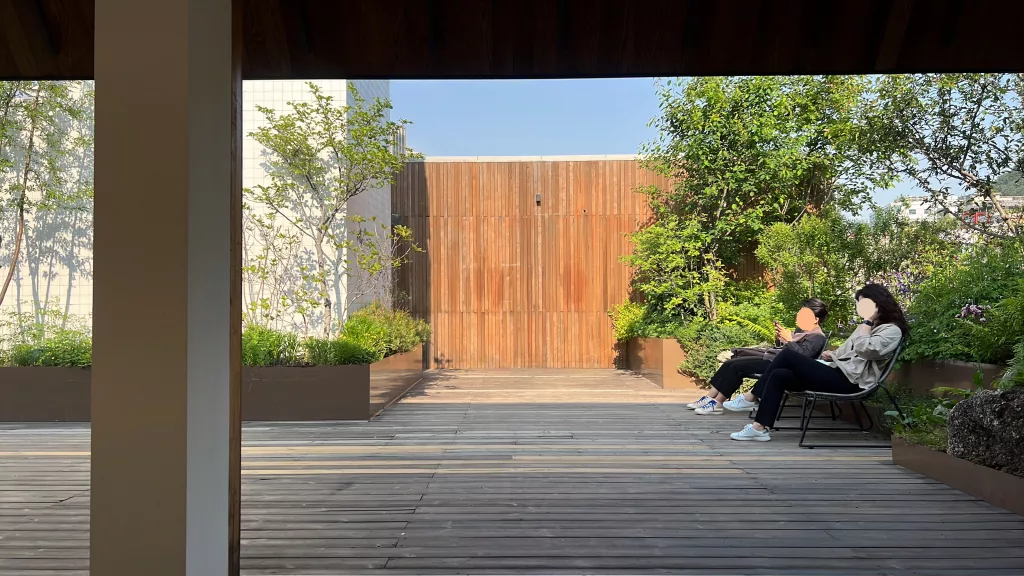
I looked up Glint, the company behind the Piknic space, and found a short introduction on the website and some before and after photos on the Piknic official Instagram highlights. Zerocomplex, a one-star French restaurant featured in the Michelin Guide, is also located in the same building (as of May 23, 2023, it will be relocated soon) and operates both a shop and a cafe. It’s a pleasant and charming space nestled amongst the trees under the tranquil Namsan Mountain.
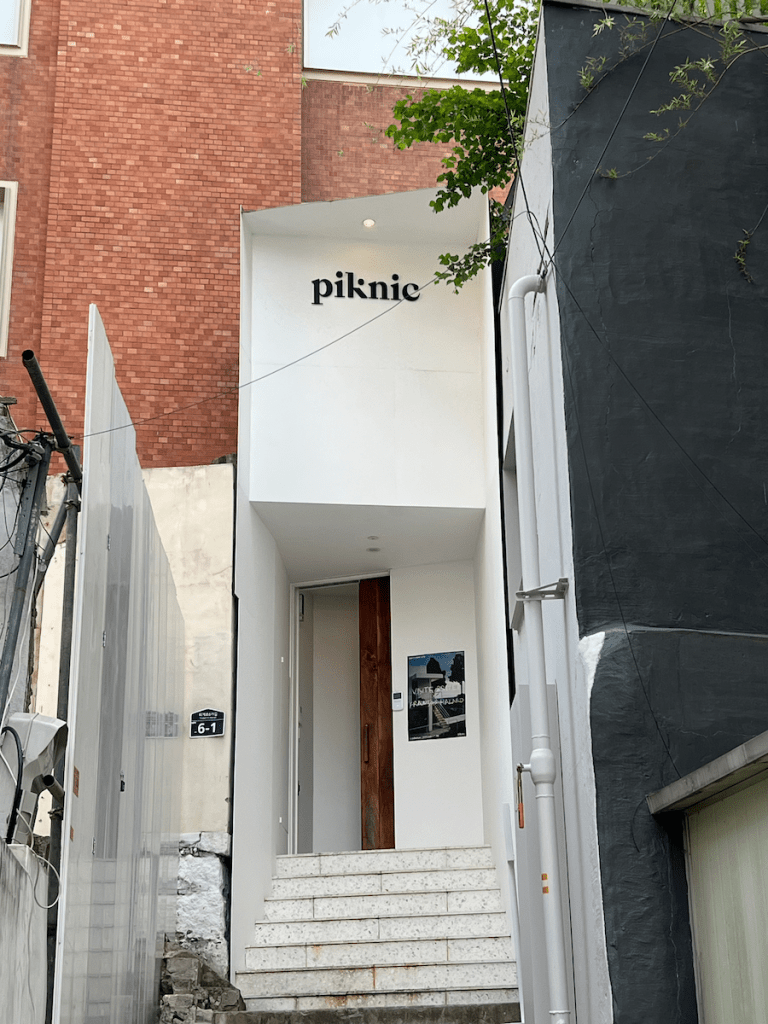
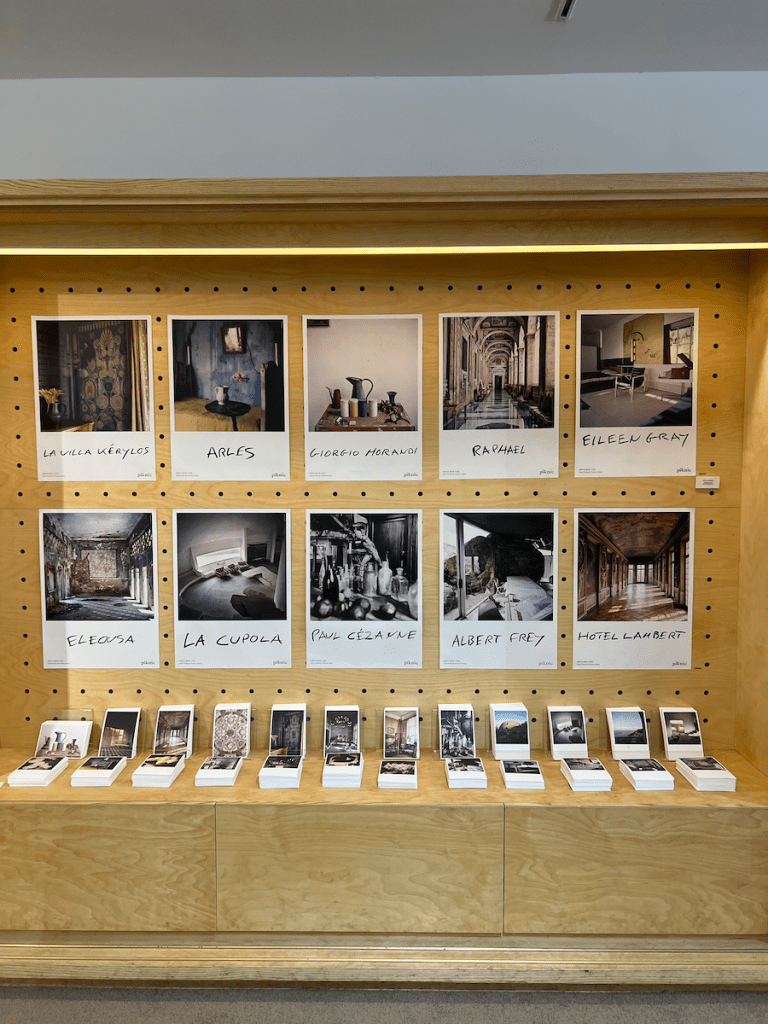
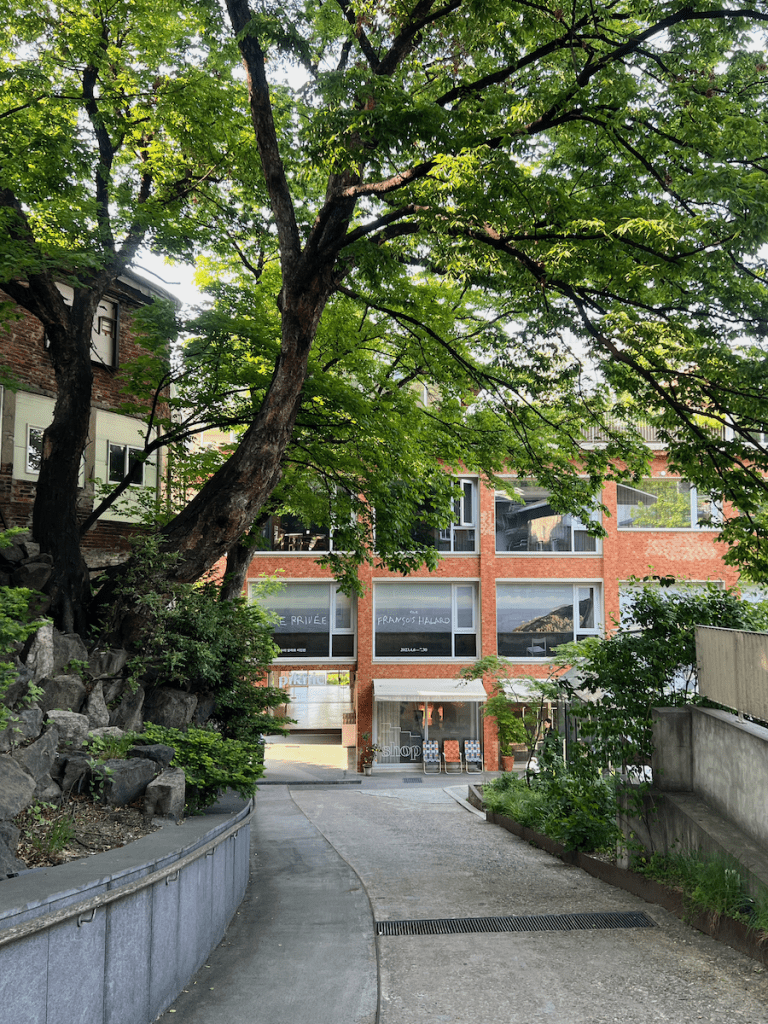
I don’t want to capture a place in a photograph
François Halard
I want to capture the mood, soul, and emotion of the place.
Speaking of the exhibition, the most impressive works were ‘La Cupola’, a dome-shaped corroded building and its context, and Zaha Hadid’s installation, which stood out for its disparate harmony within the archaic architecture.
Although I personally like photographs of buildings and interiors, I have never been moved by photographs except for press photos, and I was more curious about the process of building a reputation that allowed the artist to enter the private spaces of famous people of the time such as Coco Chanel, Yves Saint Laurent, and Hockney. Vogue Korea’s article is a good place to start.
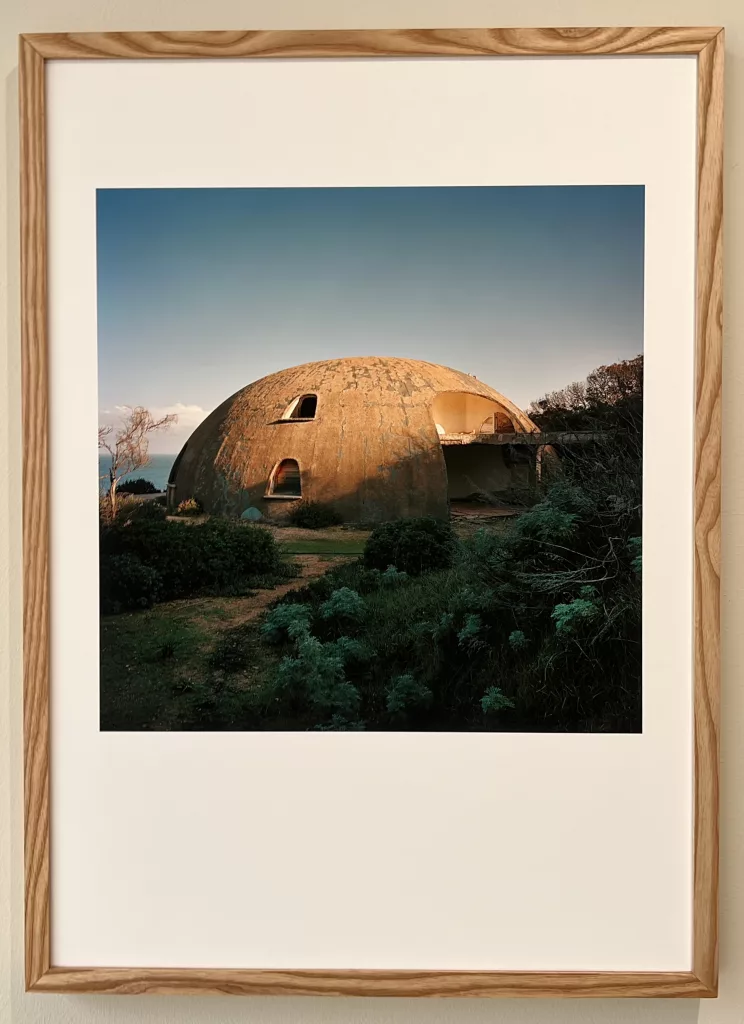
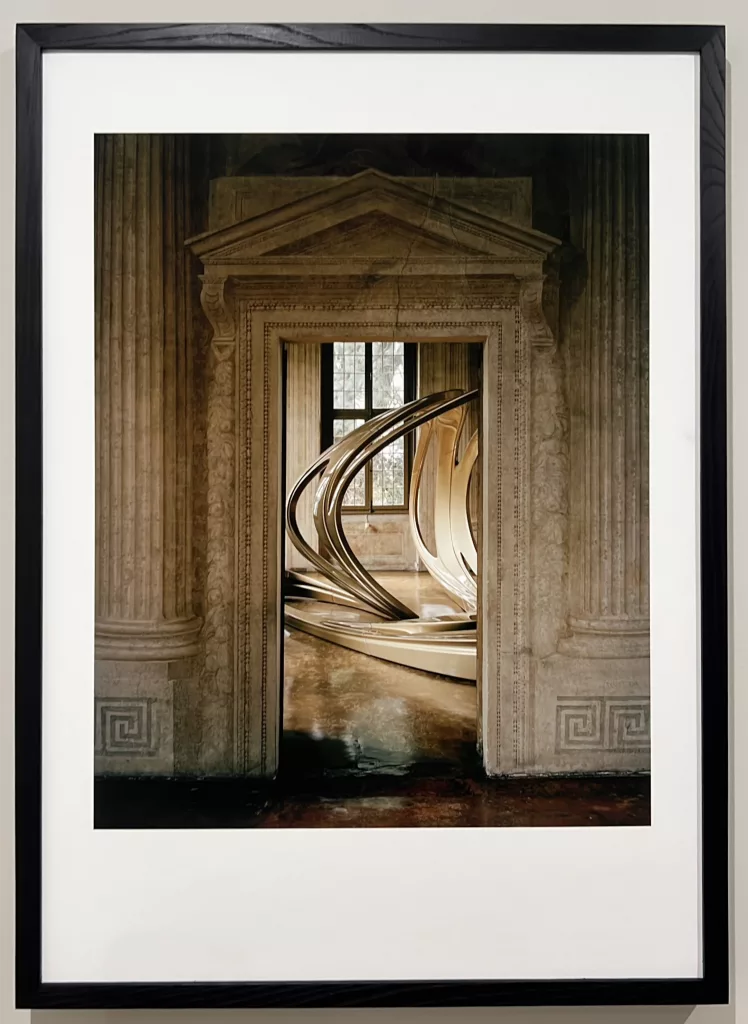
La Cupola by Dante Bini
If you Google La Cupola, you’ll see a lot of articles from the New York Times and other publications and magazines, partly because of the building’s unique look and style, but also because of the story behind it. It was commissioned by a hugely influential couple in the 1960s, filmmaker Michelangelo Antonioni and actress Monica Vitti, but after their romance ended, the building was left to fade into nature, symbolizing their fading relationship. To this day, it’s still inaccessible, requiring a trek through the bush and a jump over a fence, according to Cultured’ article from 2022.
The architect who designed La Coppola, Dante Bini, seems to have remained close friends with the couple after their split, but in a recent interview, he said he got teary-eyed with nostalgia when he saw photos of the now-dilapidated building. The director spent quite a bit of time there after his romance with the actress ended, before the area around La Coppola became overrun with tourists, and he owned it until shortly before his death.
There is a short but detailed interview with Monica about how she introduced Michelangelo to Dante Vini, and the design and construction process. It’s a fascinating story of a famous director and actress couple, an owner, and an architect just starting out in his career. Michelangelo was not a normal personality and would get dizzy when reading the requirements… He even refused to pay the design fee in the first place, saying that he would introduce him to another building when the job was done.
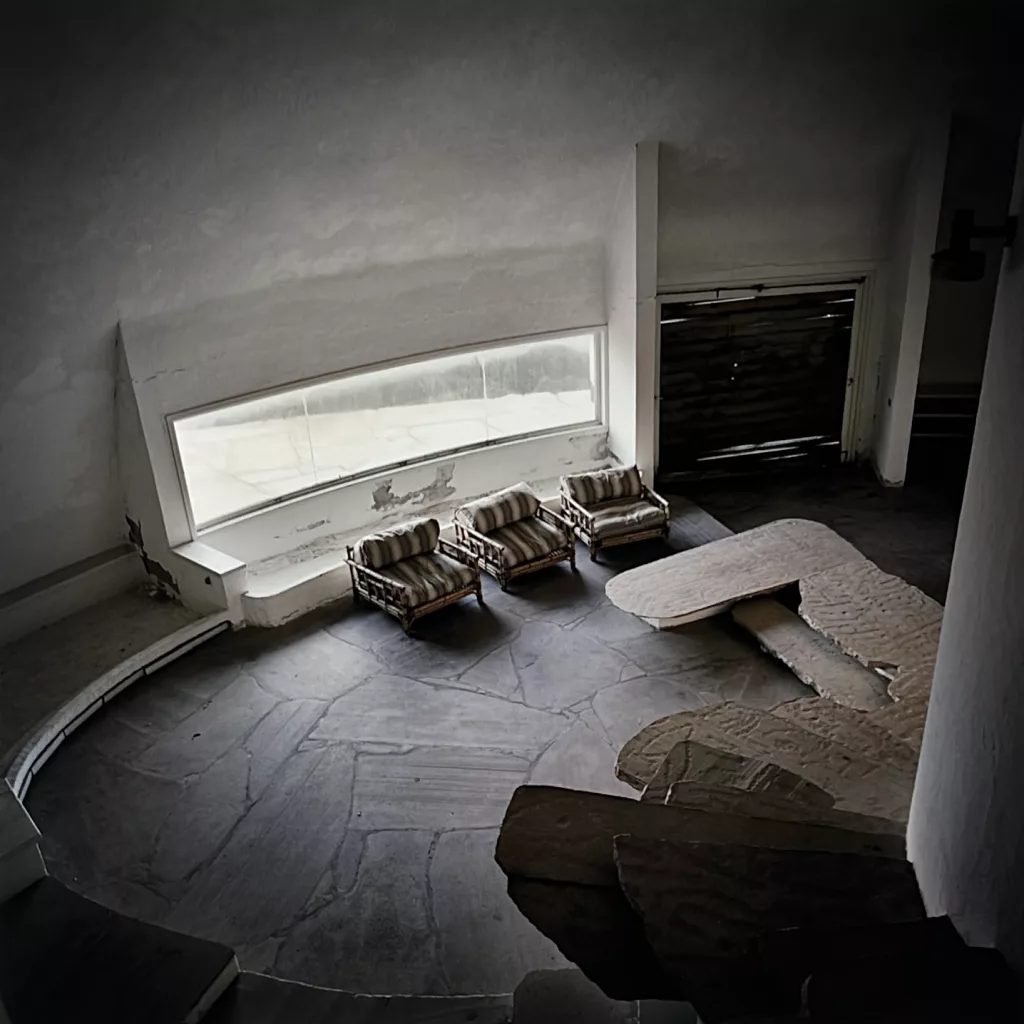
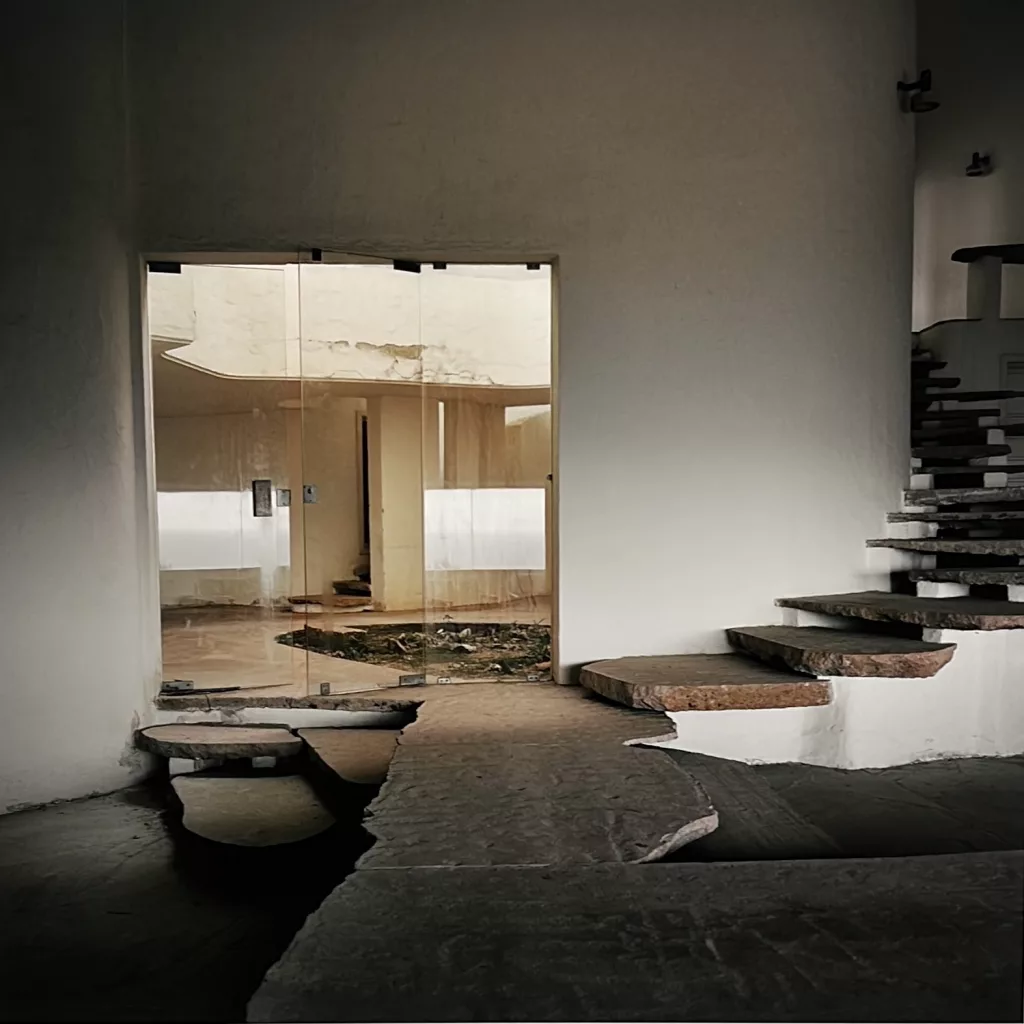
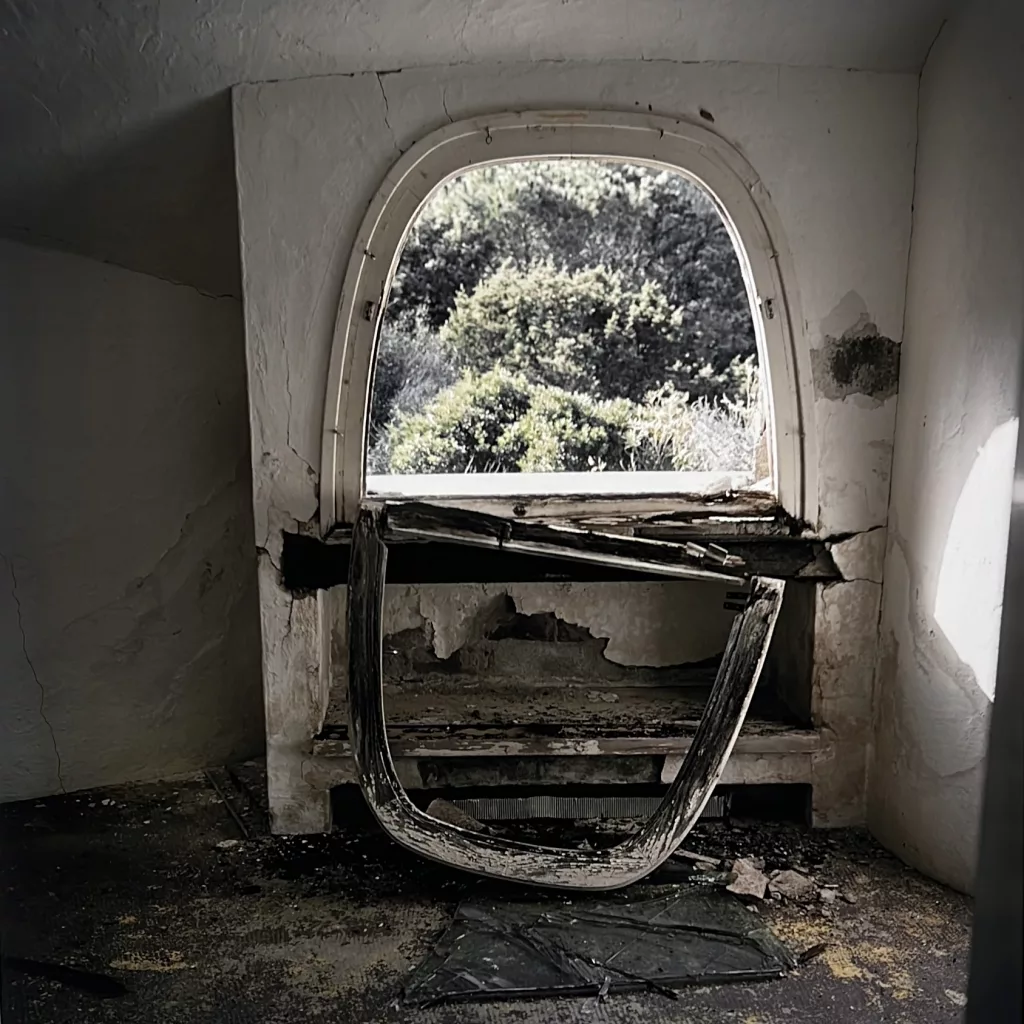
The Aura
I did some research and realized that the extraordinary curve was the work of Zaha Hadid.
The Aura The Aura is a sculpture installed to commemorate the 500th anniversary of the birth of Andrea Palladio, one of the most important architects in Italian history, and the 2008 Venice Biennale. Composed of two sculptures made of stainless steel and aluminum, Aura-S and Aura-L, it creates a dynamic and ever-changing play of light and space in the room.
The Villa Foscari aka La Malcontenta, where the sculpture is located, was built by Palladio in the 16th century and has passed through several owners and is now a UNESCO heritage site and open to tourists. In the past, the villa was used as an official residence and as a party venue for the wealthy of the time, inviting well-known person such as Le Corbusier and Winston Churchill.
The villa is also associated with William Shakespeare’s play The Merchant of Venice. Set in Venice, the play features a Jewish moneylender named Shylock, whose house is described as being “in the Rialto” and is said to be a “beautiful house.” Some scholars believe that Shylock’s house may have been inspired by Villa Foscari. While there is no clear evidence that Villa Foscari was the inspiration for Shylock’s house, the two buildings do share some similarities. Both are located on the banks of a canal, built in the classical style, and have a reputation for being gloomy and intimidating places, which is similar to how Shylock is often portrayed.
‘The Aura’ is a dialog between the Palladian architecture of Villa Foscari and the contemporary design of Zaha Hadid. The sculpture is inspired by the proportions and geometry of the villa, but at the same time it creates a new space within the room. You can see a video of the sculpture’s construction process on Zaha Hadid’s website. Installed with the intention of celebrating the beauty and harmony of Palladian and Hadidian architecture (somewhat not so convincing to me though), it has been a critical and popular success, praised for its beauty, innovation and ability to create new spaces within the villa. ‘Aura’ is a permanent installation at Villa Foscari and is open to the public.
For more photos of the installation, see Zaha Hadid.
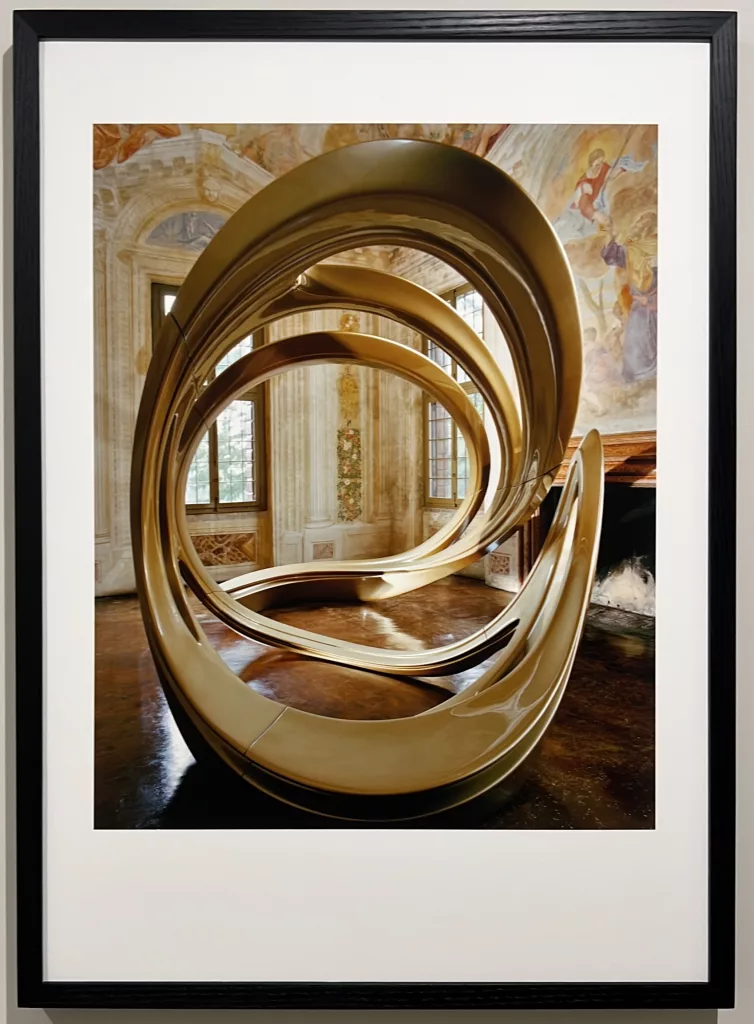
The exhibition is available through Naver and will run until July 30, 2023.
Address : 30, Toegye-ro 6ga-gil, Jung-gu
